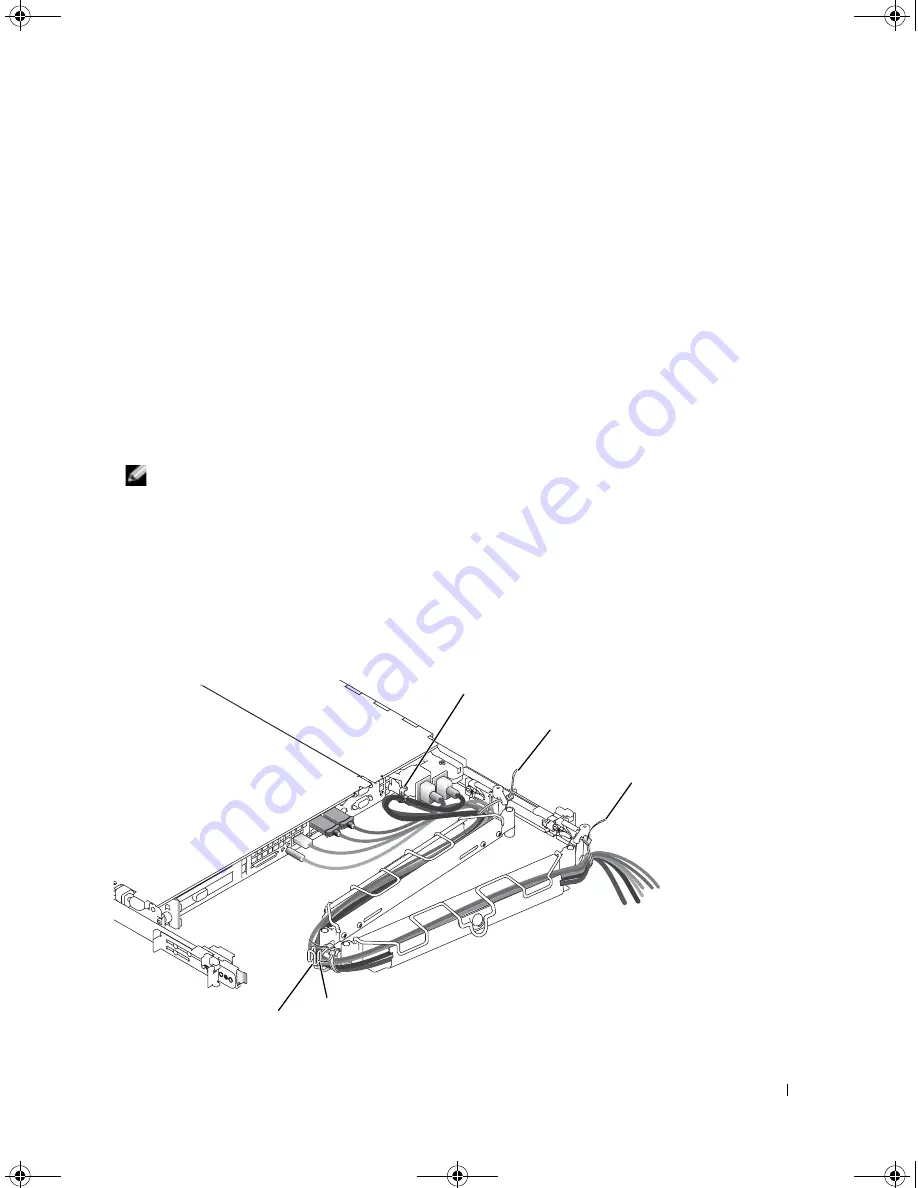
Ra c k I n s t a l l a t i o n G u i d e
1-15
2
Route the power and I/O cables through the cable-management arm, using four
loosely secured releasable tie wraps (two in the middle and on each end of the cable-
management arm). Do not fully tighten the tie wraps at this time (see Figure 1-11).
Allow some cable slack in the cable-management arm to prevent damage to the cables.
3
Secure the cables to the cable-management arm:
a
After connecting the cables to the system, unscrew the thumbscrews that secure
the front of the system to the front vertical rail.
b
Slide the system forward to the fully extended position.
c
Route the cables along the cable-management arm, make any adjustments to the
cable slack at the hinge positions, and secure the cables to the cable-management
arm with the releasable tie wraps and the wire covers over the cable-management
arm.
NOTE:
As you pull the system out to its furthest extension, the slide assemblies lock in the
extended position. To push the system back into the rack, press the slide release latch on the
side of the slide, and then slide the system completely into the rack.
4
Slide the system in and out of the rack to verify that the cables are routed correctly and
do not bind, stretch, or pinch with the movement of the cable-management arm.
5
Make any necessary adjustments to ensure that the cable slack is neither too tight nor
too loose, yet keeps the cables in place as the system is moved in and out of the rack.
F i g u r e 1 - 1 1 .
R o u t i n g C a b l e s
tie-wrap
strain-relief tab and tie-wrap
tie-wrap
tie-wrap
tie-wrap
5X860eb0.fm Page 15 Monday, October 21, 2002 11:49 AM
















































